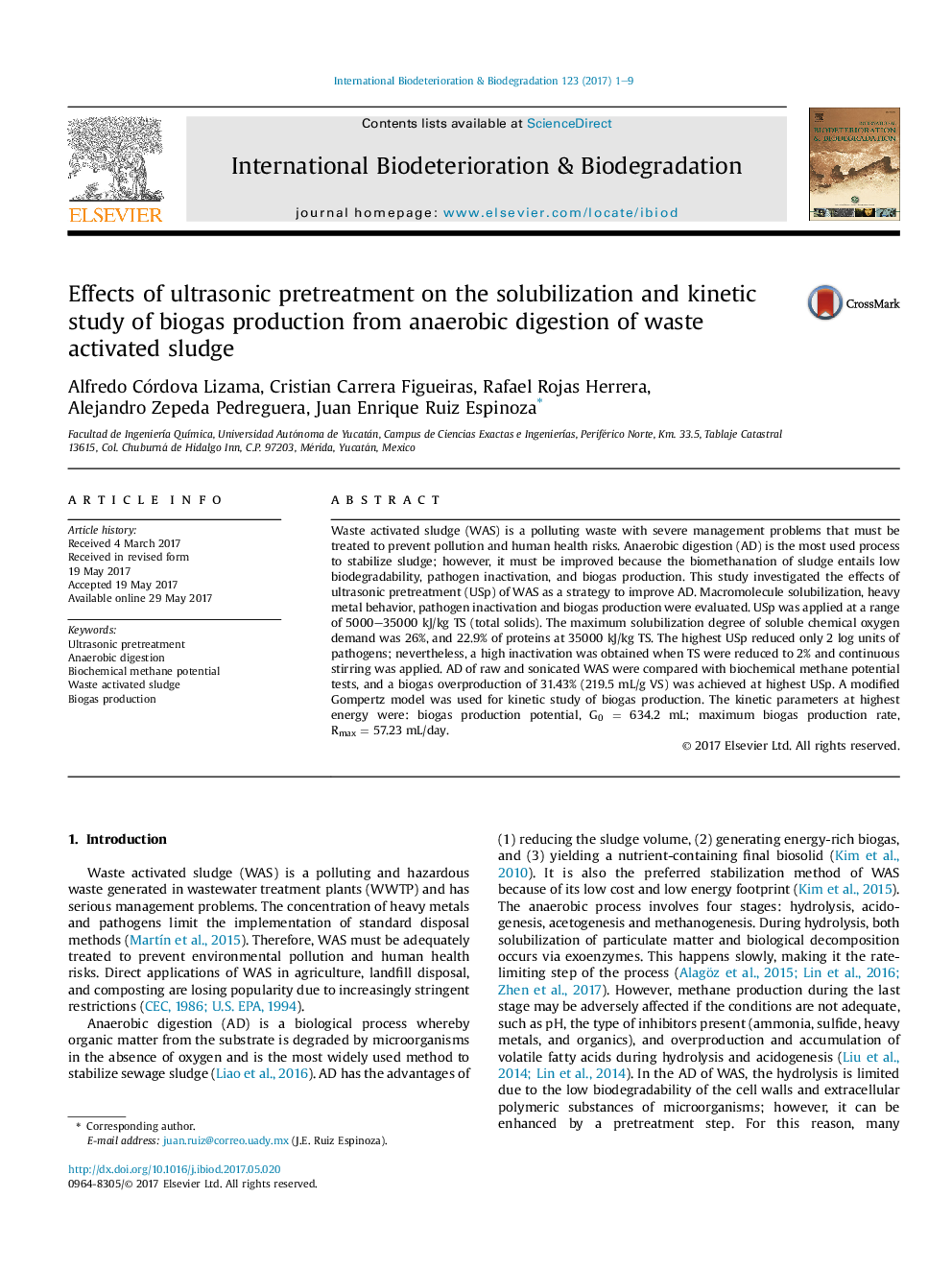| Article ID | Journal | Published Year | Pages | File Type |
|---|---|---|---|---|
| 5740245 | International Biodeterioration & Biodegradation | 2017 | 9 Pages |
â¢Ultrasonic pretreatment to improve anaerobic digestion of waste activated sludge.â¢Linear increase of the solubilization degree was observed with the specific energy.â¢The maximum solubilization degree of soluble chemical oxygen demand was 26%.â¢A biogas overproduction of 31.43% (219.5 mL/g VS) was achieved at 35000 kJ/kg TS.â¢Pathogen inactivation is most effective at lower TS (2%) and continuous stirring.
Waste activated sludge (WAS) is a polluting waste with severe management problems that must be treated to prevent pollution and human health risks. Anaerobic digestion (AD) is the most used process to stabilize sludge; however, it must be improved because the biomethanation of sludge entails low biodegradability, pathogen inactivation, and biogas production. This study investigated the effects of ultrasonic pretreatment (USp) of WAS as a strategy to improve AD. Macromolecule solubilization, heavy metal behavior, pathogen inactivation and biogas production were evaluated. USp was applied at a range of 5000-35000 kJ/kg TS (total solids). The maximum solubilization degree of soluble chemical oxygen demand was 26%, and 22.9% of proteins at 35000 kJ/kg TS. The highest USp reduced only 2 log units of pathogens; nevertheless, a high inactivation was obtained when TS were reduced to 2% and continuous stirring was applied. AD of raw and sonicated WAS were compared with biochemical methane potential tests, and a biogas overproduction of 31.43% (219.5 mL/g VS) was achieved at highest USp. A modified Gompertz model was used for kinetic study of biogas production. The kinetic parameters at highest energy were: biogas production potential, G0 = 634.2 mL; maximum biogas production rate, Rmax = 57.23 mL/day.
Graphical abstractDownload high-res image (393KB)Download full-size image
